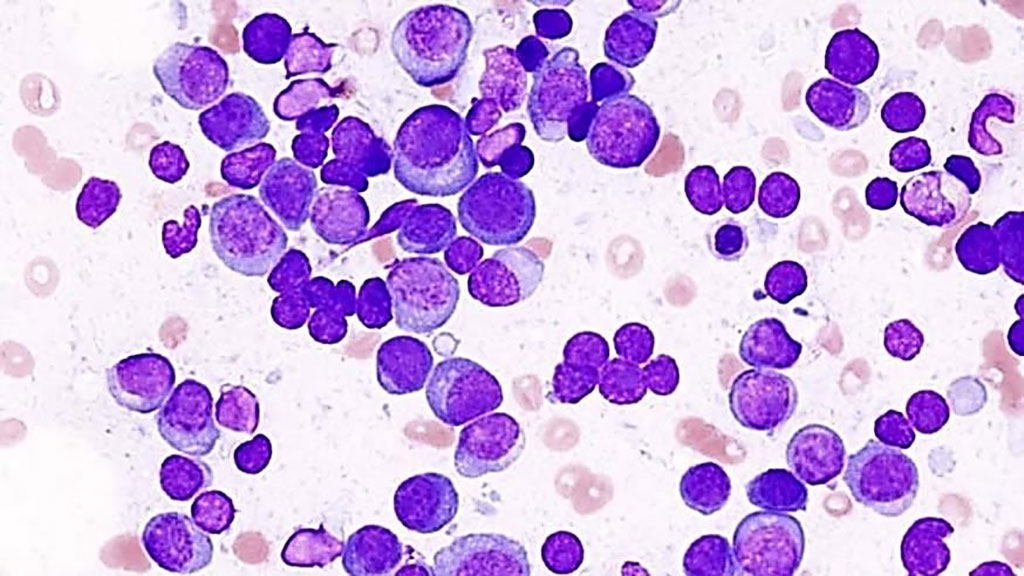Immune Microenvironment Changes Contribute to Early-Stage Multiple Myeloma
By LabMedica International staff writers
Posted on 14 May 2020
Multiple myeloma is a cancer that forms in a type of white blood cell called a plasma cell. Plasma cells help you fight infections by making antibodies that recognize and attack germs. Multiple myeloma causes cancer cells to accumulate in the bone marrow, where they crowd out healthy blood cells.Posted on 14 May 2020
Precursor states of multiple myeloma (MM) and its native tumor microenvironment need in-depth molecular characterization to better stratify and treat patients at risk. A new study suggests that immune microenvironment changes can contribute to early-stage multiple myeloma, appearing in precursor conditions that precede the blood cancer.

Image: Photomicrograph of multiple myeloma in a smear preparation of a bone marrow aspirate (Photo courtesy of the Institute of Cancer).
A team of scientists collaborating with the Dana-Farber Cancer Institute (Boston, MA, USA) performed cell sorting and single-cell RNA sequencing on some 19,000 cells from bone marrow samples from seven newly diagnosed multiple myeloma patients; 11 individuals with high- or low-risk "smoldering" multiple myeloma involving some altered plasma cells; and five individuals with a condition known as monoclonal gammopathy of unknown significance (MGUS) that sometimes progresses to multiple myeloma.
The team's analyses uncovered expression-based clusters representing nine types of immune cells including CD16+ or CD14+ monocytes, natural killer cells, B cells, and T cells. In the early stages of multiple myeloma, for example, the single-cell transcriptome data pointed to an uptick in natural killer cell representation in the immune microenvironment, together with chemokine receptor expression changes.
The investigators also picked up other immune changes, from a decline in certain memory cytotoxic T cells and enhanced interferon signaling by multiple immune cell types to altered regulation of monocyte immune cells with effects on T cell activity. They went on to confirm some of the immune microenvironment changes in mouse models of early multiple myeloma, in vitro cell line experiments, and phenotyping profiles for bone marrow samples from more than a dozen individuals with or without multiple myeloma or a precursor condition.
The scientists reported that major histocompatibility complex class II dysregulation in CD14+ monocytes, which results in T-cell suppression in vitro. These results provide a comprehensive map of immune changes at play over the evolution of premalignant MM, which will help develop strategies for immune-based patient stratification. The study was published on April 27, 2020 in the journal Nature Cancer.
Related Links:
Dana-Farber Cancer Institute













